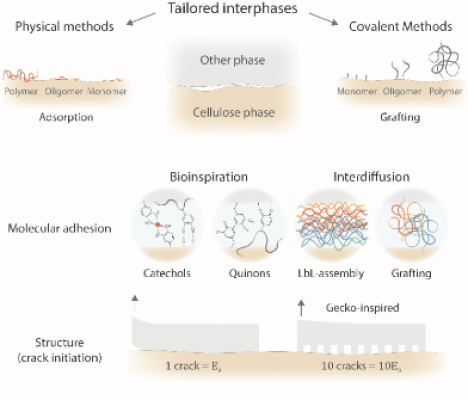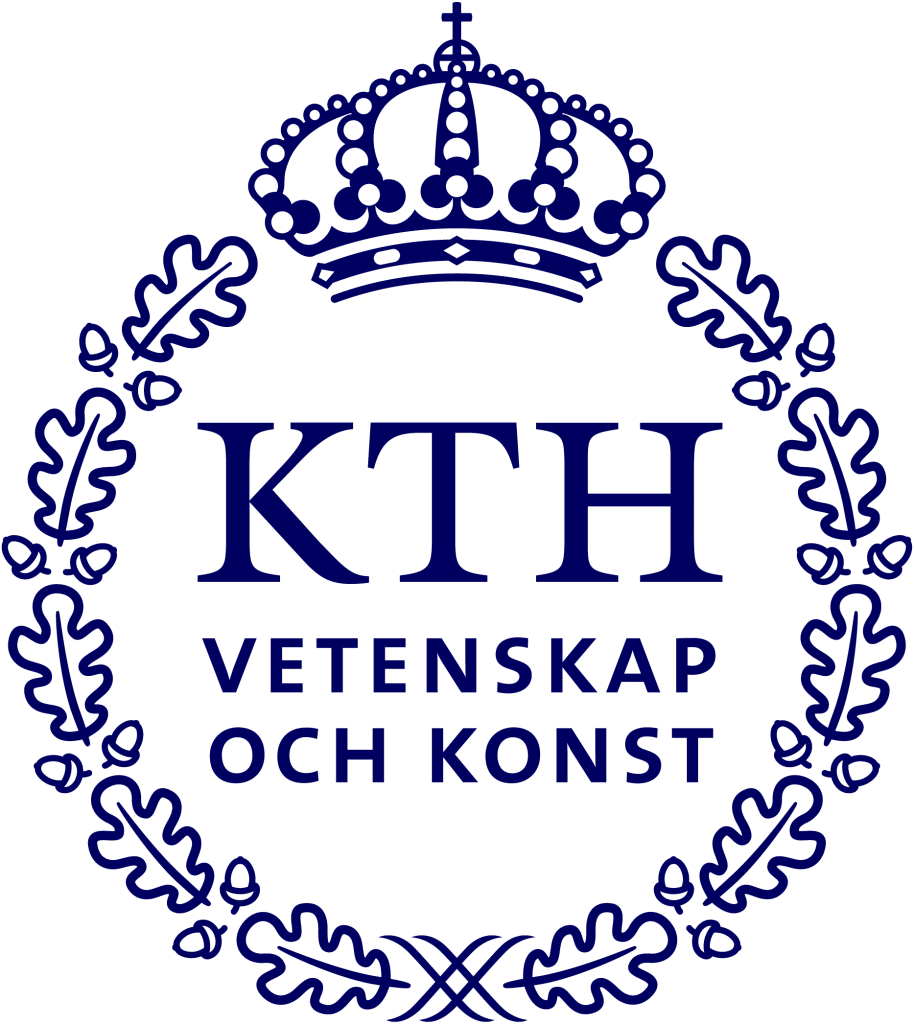II. Wood components and interfaces
Research on the components that an be isolated from wood and their further modification to meet the requirements in material applications. Research will also be devoted to material interfaces on different length scales.

Research program
Research in PII focuses on isolating and modifying wood components for various material applications, with a focus on fundamental characteristics and material interfaces. Wood-based elements such as cellulose (including nanocellulose), lignin, hemicelluloses, and low molecular compounds offer sustainable potential beyond paper and cardboard products. Acquiring fundamental knowledge is crucial to unlock the wood-based components’ full potential for novel material applications.
The core of WWSC's research involves cellulose-rich fibers and cellulose nanofibrils (CNFs). CNFs, whether liberated or within a porous fiber wall, exhibit complex colloidal behavior when interacting with water. Preserving the nanostructure of the cell wall without fibrillation is advantageous, as it allows utilization without excessive water, which also will be addressed in our future research.
Lignin, a biogenic source of aromatic carbon, has the potential to fossil-based materials. Elucidating the chemical structure and morphology of native and technical lignin fractions requires advanced characterization methods of which some are developed within WWSC. Our has also enhanced understanding of hemicelluloses and their role in plant cell wall assembly.
Tailoring interfaces is critical for sustainable wood-based materials. In circular materials for multiple reuse, efficient fiber component recycling depends on controlling secondary bonding forces at the interface. For durable materials, interfaces must ensure moisture stability, often through covalent bonds. WWSC has developed unique methods and expertise over the years, which will remain central to the future work in Program II.
Scientific impact
- Efficient fractionation- and isolation methods for biopolymers and smaller oligomers/monomers as well as eco-friendly/green methods to convert the small molecules into polymers.
- Advancement of characterization techniques to investigate the impact of the biopolymers’ polydispersity as well as the development of efficient functionalization/polymerization pathways, requiring enzymes, high-yielding, selective chemistries, and/or robust, benign, polymerizations procedures.
- Methodologies and know-how required to assess the biodegradability of wood-based materials.
- New understanding of the interactions inside the cellulose-rich fibre wall and utilization of these insights for targeted chemical functionalization of the fibre-wall CNFs.
- Methods for characterization of interfacial adhesion and interactions elucidating structure-property relationships in multiphase wood-based materials.
- Fundamentals on biomimetic tailoring of interfaces using biobased and/or biodegradable moieties and sustainable chemistry.




